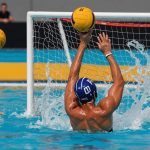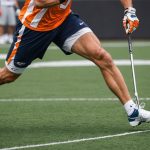Overview of Biomechanical Analysis in Sports
Biomechanical analysis is the study of the mechanics of human movement and its application to sports science. It involves evaluating movement patterns to understand the forces acting on body parts during physical activities. This scientific approach is essential in examining how muscles, bones, tendons, and ligaments operate and interact during sports performance.
Biomechanics plays a critical role in optimizing athletic performance and reducing the risk of injury. By analysing movements, professionals can identify inefficiencies and suggest technical adjustments, directly contributing to performance enhancement. Coaches and athletes use this information to improve techniques, such as refining a runner’s stride or a swimmer’s stroke.
In the same genre : Mastering breakfall skills: key strategies for uk judo coaches to boost athlete performance
Historically, the study of biomechanics in sports has evolved significantly. Initially based on rudimentary observations, it now utilizes advanced technologies like motion capture systems and force plates. These technological advancements have revolutionized how athletes train and compete, allowing for precise, data-driven insights.
This dynamic field continues to grow and adapt, integrating new research and methodologies. As our understanding deepens, biomechanical analysis becomes increasingly integral to the ever-competitive world of sports science, continually pushing the boundaries of what athletes can achieve.
Topic to read : Enhancing athletic recovery: the impact of massage therapy on combat sports athletes in the uk
Impact of Biomechanical Analysis on Fencing Performance
Exploring the role of biomechanical analysis is crucial in transforming fencing performance. Athlete efficiency becomes a focal point, achieved by understanding the intricacies of movement and technique improvement.
Performance Metrics
In fencing, several metrics provide insight into an athlete’s ability. Speed, reaction time, and postural balance are essential, offering indicators that shape personalized training regimens.
Identifying Strengths and Weaknesses
Biomechanical analysis uses these metrics to highlight inefficiencies and areas needing enhancement. For example, poor postural balance might reveal a misalignment affecting overall performance. Coaches leverage these insights to refine techniques, addressing weaknesses while amplifying strengths.
Benefits of Enhanced Efficiency
Enhanced efficiency is one of the pinnacles of biomechanical analysis. Through detailed examination, fencers can fine-tune their movements for optimal energy use, increasing athlete efficiency. This reduction in wasted motion allows athletes to execute maneuvers with greater precision and endurance, which is crucial during long bouts.
With its focus on measurable outcomes, biomechanical analysis empowers fencers to advance strategically. The ability to understand and adjust techniques based on analytical data transforms fencing performance with notable efficacy. Empowered with these tools, athletes can reach new heights in technique improvement and overall prowess on the strip.
Biomechanical Techniques Applied to UK Fencers
Exploring the application of biomechanical techniques within UK fencing provides a fresh perspective on improving training methods and performance analysis. Understanding UK fencing techniques involves delving into the crucial aspects such as stance, footwork, blade use, and timing.
Analysis of Stance and Footwork
The stance and footwork form the foundation of any fencing technique. Biomechanics reveals the importance of a stable yet agile stance for effective fencing. Training methods focus on distributing weight evenly between both feet to maintain balance and ensure quick transitions. UK fencers often adopt a slightly angled stance, allowing for varied movements while conserving energy.
Evaluation of Blade Techniques
When evaluating blade techniques, biomechanical insights emphasize precision and control. Successful fencers in the UK refine their techniques by focusing on the wrist and forearm’s rotation. The integration of biomechanical principles aids in minimizing errors and optimizing stroke effectiveness.
Assessment of Timing and Coordination
Effective performance is significantly influenced by timing and coordination. Biomechanical methods examine the syncronicity of movements, often resulting in improved reflexes and strategy execution. Comparison with traditional techniques showcases enhanced decision-making skills, critical for mastering fencing techniques. As UK fencers increasingly integrate biomechanical analysis, the potential for refined techniques and advanced strategies grows exponentially.
Case Studies of Biomechanical Analysis in UK Fencing
In the world of competitive UK fencing, the application of biomechanical analysis has been pivotal in shaping the careers of successful athletes. Prominent fencers have seen transformative improvements through this approach, reaping substantial benefits in precision and agility.
Several case studies highlight these successes:
-
Modern Techniques: Many UK fencers, after incorporating biomechanical techniques, have enhanced their footwork and reaction times significantly. This advantage translates directly into competition, providing a strategic edge over opponents.
-
Performance Metrics: By analysing movement using advanced tools, these athletes have identified inefficiencies in their techniques. Post-analysis, the most successful cases involved targeted training routines which improved both endurance and accuracy.
-
Outcome: Fencers leveraging biomechanical insights have reported higher competition success rates, attributing their wins to informed adjustments and training regimens.
For aspiring athletes, these real-life examples offer valuable lessons. By observing biomechanical patterns and making precise, informed changes, they can potentially elevate their performance. This method propels athletes to new heights, blending scientific analysis with physical prowess to optimise fencing skills efficiently.
Expert Opinions on Biomechanical Analysis and Fencing Techniques
Gathering expert insights from both sports scientists and fencing coaches has shed light on the potential transformations within the sport of fencing. In recent interviews, experts and sports professionals have highlighted the profound impact of integrating technology and advanced analysis to enhance athletes’ training and performance.
As expressed by these sports professionals, the use of technology in biomechanical analysis has become indispensable in understanding and refining fencing techniques. Coaches now leverage data analytics to pinpoint areas for improvement, allowing for a more tailored and effective training regimen. This adoption of technology helps athletes perfect their movements, optimise their strategies, and ultimately, excel in competitive scenarios.
The integration of sophisticated analysis tools presents promising predictions for the sport’s evolution. Experts foresee a future where fencing is deeply intertwined with real-time data feedback, reshaping the methodology of training. This not only enhances performance accuracy but also pushes the boundaries of what’s possible in fencing techniques.
Such advancements are paving the way for more scientifically-informed approaches, encouraging a dynamic shift in how the sport is coached and executed. This fusion of science and sport exemplifies the evolving landscape of modern athletics.
Benefits of Biomechanical Analysis for UK Athletes
Biomechanical analysis offers significant advantages to athletes in the UK, enhancing both athlete development and skill enhancement. By scrutinising movement patterns and mechanics, athletes can gain insight into optimising their performance. Long-term biomechanical training fosters progressive improvements in techniques, leading to better competitive advantage. An athlete can fine-tune their posture, leverage, and force application, crucial for maximising efficiency on the field.
Additionally, biomechanical analysis plays a pivotal role in injury prevention and recovery. Understanding stress points and body dynamics assists athletes in re-evaluating their form and minimising injury risk. Swift identification of potential hazards enables preemptive action, such as adjusting body mechanics or integrating specific strength exercises specific to the athlete’s sport. This proactive approach aids in sustaining consistent athlete development by reducing downtime from injuries.
For fencers, biomechanical insights are particularly invaluable. With precision as a cornerstone, analysing arm movement and stance nuance can translate into a competitive advantage. Enhanced agility and response times are honed by training under biomechanically informed regimens, allowing UK fencers to excel against opponents through improved tactic execution and endurance. Through such detailed evaluations, athletes are empowered to push beyond traditional limits.











